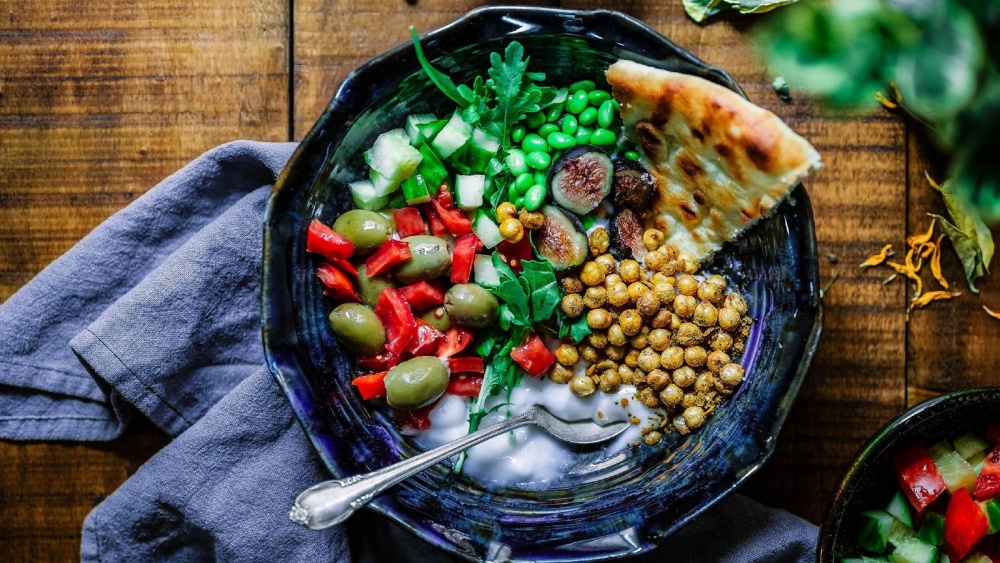Muay Thai fighters are elite athletes whose bodies are well-oiled machines, perfected over the years to reach peak physical conditioning. Anyone who’s seen a professional Muay Thai fight will attest that they are among the leanest physical specimens on the planet.
You may be thinking that if you could get a copy of perhaps Johnathan Haggerty’s meal plan and copy it to the letter then you’d be able to replicate all of the benefits, but unfortunately, diets aren’t that simple. Each of us is different and we all lead a unique lifestyle that affects the nutritional intake we need to perform at our peak. That being said, the ideology behind every elite fighter’s meal plan is practically identical and can be broken down into three words.
Eat To Perform
If you want to diet like a Muay Thai fighter then this should become your new mantra. Though it may appear to be simple on the surface, this principle is full of nuance and complexity and isn’t something that you can perfect overnight. Not only do you need to know exactly what it is that you are ‘performing’ for, but you also need an intimate knowledge of your body and a detailed outline of your daily schedule.
If that sounds far too complex, don’t stop reading yet. In the next few paragraphs, we’ll break this nutritional ideology down into its most basic terms and give you a crash course in the macronutrients that form the bulk of your diet before giving you some ideas on how to apply it to your performance schedule. When you have finished reading, you’ll be armed with all the knowledge you need to perfect your own Muay Thai fighter’s diet.
Eat To Perform In A Nutshell
Put simply, eating to perform means that you are mindfully fuelling yourself with the right food for the tasks that you are accomplishing throughout the day. Everything that you ingest has a purpose and by eating the right things at the right time, you maximize their impact on your body, so it is always primed to work the way that you need it to.
Macronutrients: The Core Of Your Diet
Before we delve into the nitty-gritty of a fighter’s diet let’s first introduce macronutrients. They make up the core of your diet and each has its properties that make them essential parts of your nutritional intake. There is a plethora of information available on this subject online, so we’ll just introduce the very basics here:
- Carbohydrates: Your primary body fuel. They are quickly digested so that you can use them to train at a high level. You have simple carbs (sugar, fruit, pasta, white rice, etc.) which are burned quickly and are great to have before exercise, and complex carbs (brown rice, oats, root vegetables, etc.) that burn slower and are useful for tasks needing prolonged concentration.
- Proteins: The building blocks of muscle and are necessary for building strength and repairing the wear and tear on your body after a hard training session.
- Fats: They are important for the digestion of vitamins and the synthesis of hormones that regulate your mood and your energy levels in and out of the gym. They can also be used as a secondary fuel source if you burn through all of the carbohydrates available in your system.
What Are You Performing For?
The first thing most people think of when you mention a fighter’s diet is weight cutting. Yes, making weight is going to be a fighter’s primary concern if they are preparing for a competition but the eat-to-perform mantra goes well beyond this.
Write a list of everything that you do in a day and the times that you do them. This isn’t just your training plan but also your work, your commute to and from home, life admin such as cooking and cleaning, and even the social events that you have marked in your calendar. Even if you are a professional fighter, you’ll eventually find yourself coming unstuck if you don’t have the energy to perform in all of these areas.
The Right Fuel For The Right Job
Now that you can see all of the tasks that you are performing in a day, you will need to make sure that you are fuelling yourself correctly for them. Having your schedule written down also makes it easier to plan your daily meal plan and have the right fuels available when it is time to eat. If you just wing it and rely on whatever is available when you need to eat, then you will probably be compromising your diet for less effective foods. So, plan ahead.
Look at the times when you need to be performing at a high intensity, this will most likely be when you’re doing some kind of physical activity or you’re in the gym training. Simple carbs are your best friend here. You’ll want to eat them around an hour before training so that your blood sugar is spiked, and you have plenty of energy to smash pads and spar. If you’re training for longer than an hour at a high intensity you might also want to consider some kind of liquid-based carbohydrate, like a sports drink, so that your output doesn’t drop midway through the session.
After high-intensity, physical performances you are going to need to focus on getting some protein in you ASAP so that you are well-recovered for your next training session. Nutritionists recommend getting a source of protein into your digestive system within 30 minutes of finishing your training for maximum benefits. Protein shakes are great for this purpose because the protein can easily get absorbed into your system, especially whilst your blood is still flowing into your muscles and away from your stomach.
If you need to perform consistently at a low physical intensity for long periods, then complex carbs and fats are your fuel of choice. These are broken down at a slower rate which means that your blood sugar levels won’t spike and drop shortly after eating them. You can even slow the rate of digestion further by eating high-fibre foods like vegetables which are a great source of the vitamins and minerals you need for hormone synthesis. Eating simple carbs at this time may make you feel more productive, but this will only be for a short burst before you get hit with a sugar crash and need more fuel to keep you going.
Nobody Is The Same And Everybody Is Different

Everyone’s needs are different, so make sure to tailor your meals to your individual preferences and dietary needs!
You may have noticed that we didn’t prescribe any specific foods in the examples above. This is because we all have foods that we like and dislike, just as we all have bodies that react differently to different fuel sources. You might have also noticed that we didn’t demonize any ‘junk’ foods like chocolates or sweets. This isn’t only because such foods often contain a heap of readily available simple carbohydrates that could potentially fuel you through high-intensity training. Most people find them enjoyable to eat and if you don’t enjoy the foods you eat, then you’re more likely to break your diet and start snacking. We would only consider such foods to be ‘junk’ if you weren’t eating them for a specific purpose.
We also made a point of avoiding the word ‘calorie’ until now. You don’t want to start obsessing over how many of them you’re eating until you need to make weight for a fight. If you are eating mindfully and with the purpose of fuelling your body, then you’ll find yourself walking around at your body’s natural weight. This will help you and your coach make an informed decision about a healthy and reasonable weight range for you to compete in. When it comes to fine-tuning your diet for the purposes of making weight for a fight, it is best to work with a qualified nutritionist who can help you learn your body’s needs while helping you make weight safely.
Apart from this everybody has a unique metabolism and will burn calories at a different rate, so prescribing how much you need to eat to perform in training in an online article would be inaccurate, verging on dangerous. If you adopt the eat-to-perform mindset of dieting you will naturally become leaner, fitter, and stronger and you’ll perform better not only in training but in every aspect of your life.
You may also like:
















